Kristen Parrish: A love affair with physics and teaching
Kristen Parrish – Sustainability Profile from ASU Engineering on Vimeo
Kristen Parrish fell in love with physics in her 10th grade class in Michigan.
“It was kinematic equations, figuring out how far you could drive a car up a ramp,” Parrish said. “I asked my teacher what kind of job I could get where I would do kinematic equations for the rest of my life. He told me I could work for an auto company or be a structural engineer.
“My parents worked for auto companies, so I decided to be a structural engineer.”
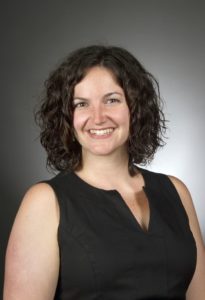
Kristen Parrish
Today, Parrish is an assistant professor in the Del E. Webb School of Construction, part of the School of Sustainable Engineering and the Built Environment, one of the Ira A. Fulton Schools of Engineering at Arizona State University. Her research is focused on integrating energy-efficiency measures into building design, construction, and operations processes.
After high school, Parrish headed to the University of Michigan, where structural engineering was embedded in the civil engineering program.
She arranged an internship in road design. She didn’t love it.
“Academics and learning were cool,” Parrish said. “At work, things felt 25 years behind.”
While attending a conference at Purdue University, she heard a keynote speaker say that 50 percent of the civil engineering faculty across the country were older than 50 and close to retiring, creating a critical need for new faculty.
So Parrish used the accelerated program to earn both bachelor and master’s degrees in civil and environmental engineering, and started looking at doctoral programs, choosing the University of California, Berkeley.
Her first experience teaching was as a teaching assistant for a 450-student intro to computer programming class, where she saw several students struggling.
“I realized it was the first time they had to think in algorithms, that it wasn’t a syntax issue of where the semicolon was placed, but an issue with how they visualized the problem formation,” Parrish said. “When I explained it like a math problem, what steps were needed, and how many times each step was needed, students understood.”
At Berkeley, Parrish also became fascinated with how designers and builders interact and how to improve their interaction, which became the topic of her doctoral studies.
“Designers are engineering things out to the fourth decimal place,” Parrish said. “There’s no way to check that in the field. I want to help create designs that are buildable.”
After finishing her doctorate, Parris worked on her ideas at the Lawrence Berkeley National Laboratory as a postdoctoral fellow and then a scientific engineering associate in the Building Technologies and Urban Systems Department.
The lab had funding to look at deployable energy-efficiency measures in buildings through the American Recovery and Reinvestment Act, and Parrish loved the idea of applied research, of working on actual buildings. But she didn’t know a lot about energy.
“I didn’t know what a kilowatt hour was, or how it translated to a BTU (British thermal unit),” she said. “I read ‘From Edison to Enron: The Business of Power and What It Means for the Future of Electricity,’ which helped.”
She ended up working on three buildings in Long Beach and Merced, California, and at the University of South Carolina.
Although Parrish loved the work in the lab, she missed teaching and lectured at Berkeley one semester. Still, she felt divided, like she wasn’t giving enough of herself to either the lab or teaching, so she applied at ASU.
“I met Paul Johnson (dean of ASU’s Ira A. Fulton Schools of Engineering) and he talked about how important the freshman ‘experience’ was,” Parrish said. “He used the word ‘experience.’ I could tell he cared about the students and that it permeated the schools.”
She was hooked.
This year, Parrish is teaching Construction and Culture: A Built Environment, a course that is cross-listed as a humanities credit and has about one-third engineering students and two-thirds from other majors; an undergraduate class on materials, methods and equipment; and a graduate class in retrofit construction.
She was thrilled at E2, the Fulton Schools of Engineering’s orientation for freshmen at a camp in northern Arizona, when she walked up to a group being led by one of her students, Kallie Bow. Bow said to the new students, “You’re so lucky to have a teacher like Dr. Parrish. She’s the best.”
“I almost started crying,” Parrish said. “I love to teach. It’s why I wake up.”
Parrish said she is keenly aware that women in engineering often are discounted by industry, and her doctoral advisor, also a women, gave her three absolute rules to maintain respect: never take group notes in a meeting, never organize the parties, and never bring in cookies.
Parrish, who loves to bake, said she violated the last rule, but has religiously followed the first two, and works with ASU’s Advancing Women in Construction student group to help women students with professional development.
In the next five years, she hopes to advance her research, nailing down metrics for integrated project delivery and publishing several papers. In 10 years, she hopes to be synonymous with ASU’s construction management engineering program, for her name to come up when people talk about the program.
And beyond that, she hopes eventually to move into university administration, as a department chairperson, director or dean.
When she’s not working, she’s baking, scrapbooking, hiking with her partner and his daughter, doing hot yoga in a 110-degree room or taking dance classes in Bollywood, Zumba and Flamenco.
These faculty profiles were written as part of the celebration of the grand opening of the College Avenue Commons, the home of the Del E. Webb School of Construction, in 2014.
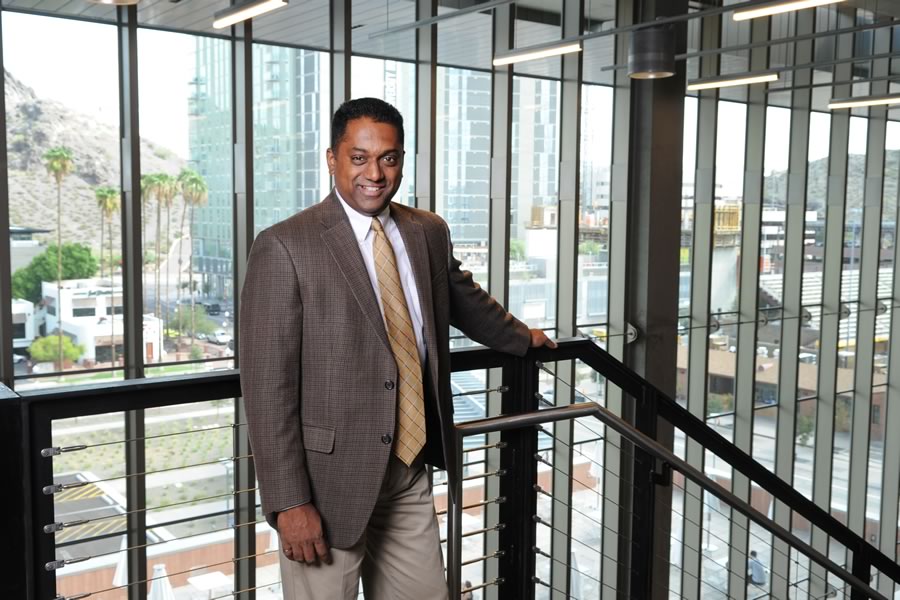
Sam Ariaratnam: Digging his way to the future
“ASU is a dynamic place. In real estate, it’s location, location, location. It’s the same in education. The Phoenix metro area has a dynamic construction industry and it is helping us build a world-class program.”Sam Ariaratnam is digging his way to the future. But...
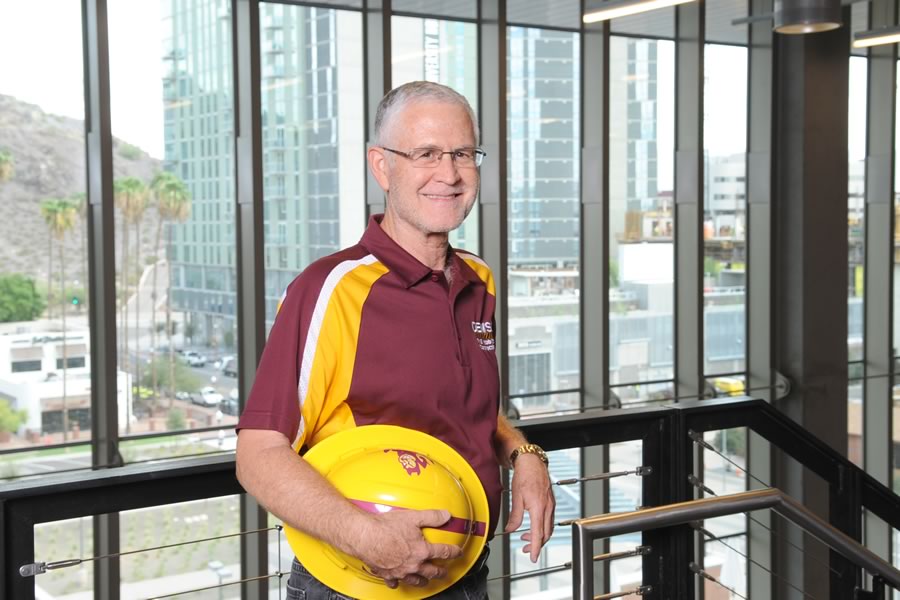
Allan Chasey: Embracing his construction destiny
“I enjoy seeing buildings going up. There are few professions where you can go back 20 to 30 years later and say, ‘I had something to do with that.'”Editor’s note: Allan Chasey retired in the fall of 2016, but his construction management legacy lives on in the DEWSC....
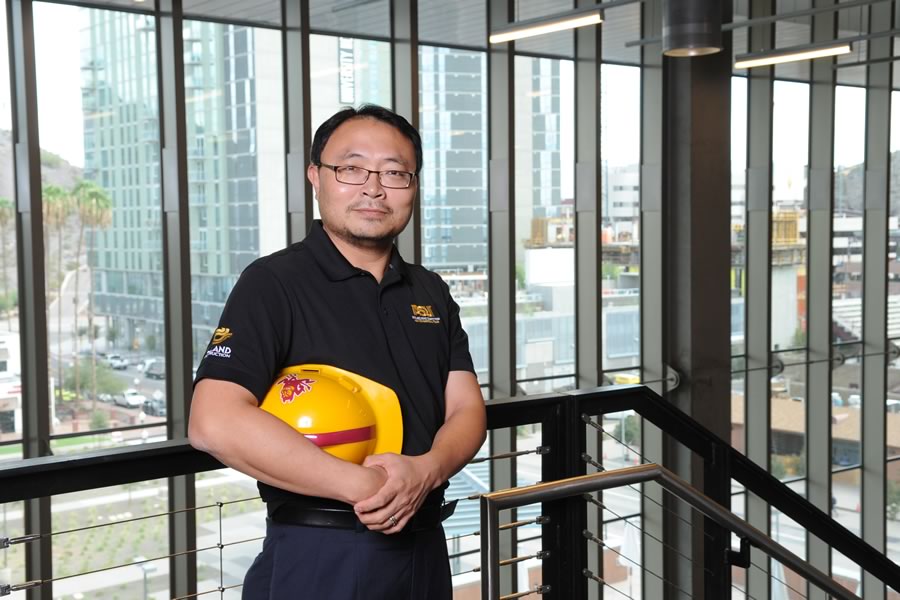
Oswald Chong: Seeking truth through data
Oswald Chong labels himself a skeptic. “I always question people indirectly as I don’t like to confront people directly,” said Chong, an associate professor in the Del E. Webb School of Construction, part of the School of Sustainable Engineering and the Built...
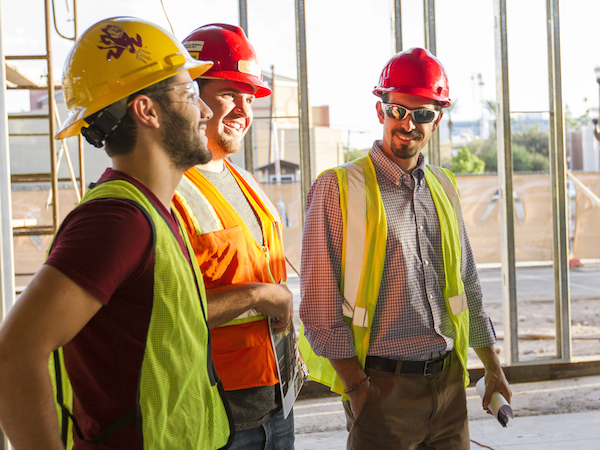
Mounir El Asmar: Looking to fuse disciplines
Mounir El Asmar has always been interested in multidisciplinary integration. Growing up in Beirut, Lebanon, and having gone through the French education system throughout his childhood, he juggled the idea of American versus French college education, and the majors of...
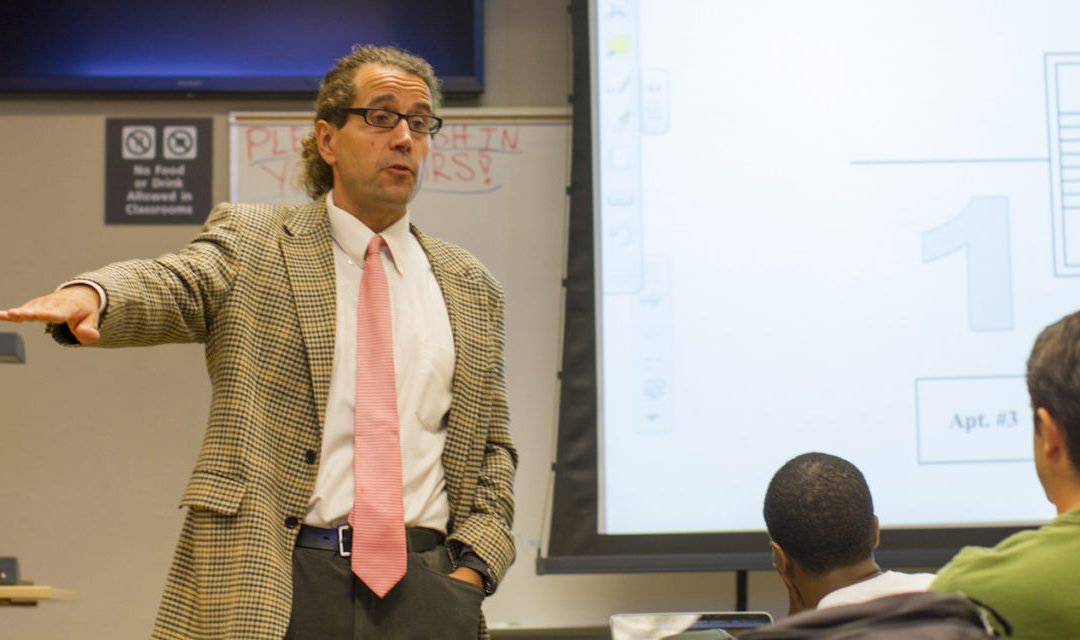
David Grau: The human element and variability
David Grau worked for years in the design and construction industry, and saw firsthand that the large complexity intrinsic to the delivery of capital projects resulted in variability and uncertainty. In turn, he observed that such uncertainty negatively impacts the...
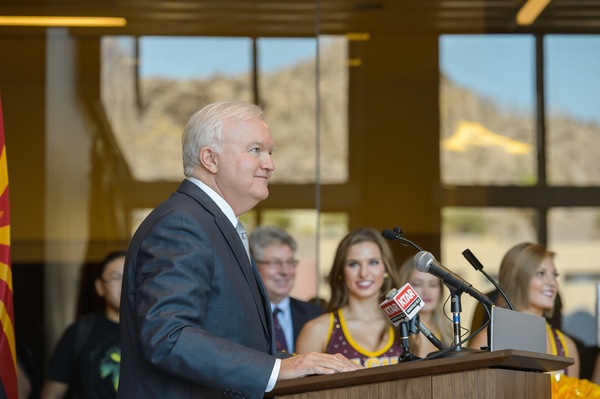
Edd Gibson: Leading through teaching and planning
“Planning is the intersection between business and engineering,” Gibson said. “Why are we doing the project? How should we proceed? What is the scope? It’s all about people and risk management, and this is when you have the largest influence on creating a successful...
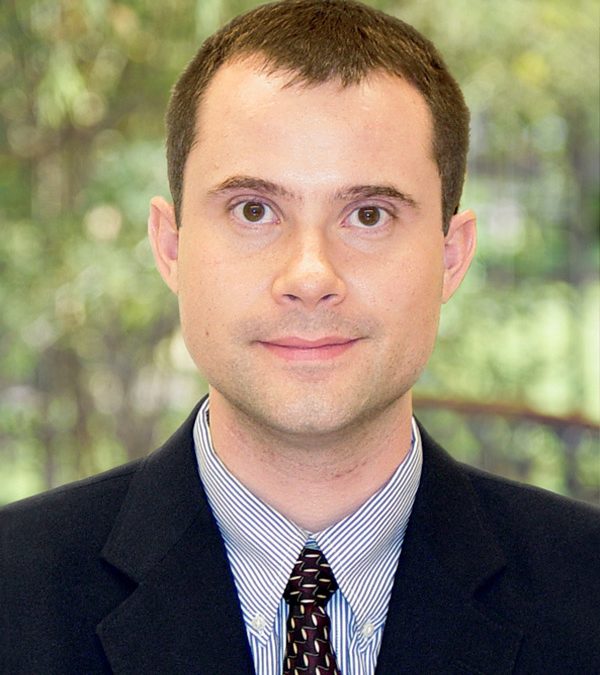
Kenneth Sullivan: ‘It’s all about people’
Kenneth Sullivan will tell you: Project performance? It is all about people. It always has been. “An efficiently engineered process can drive performance outcomes, but to truly optimize, the capability of the key individuals participating in that process is key. When...